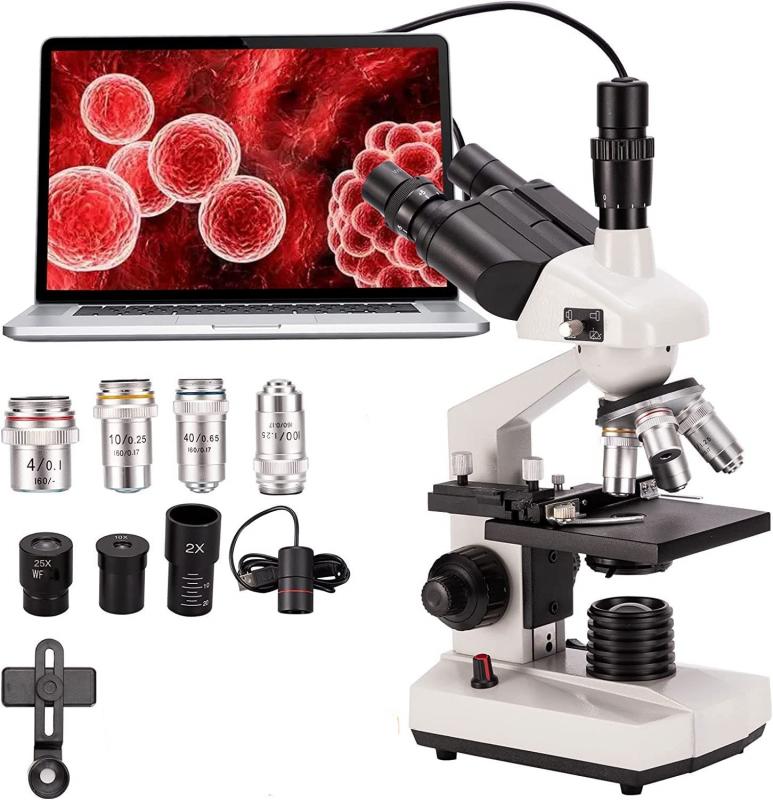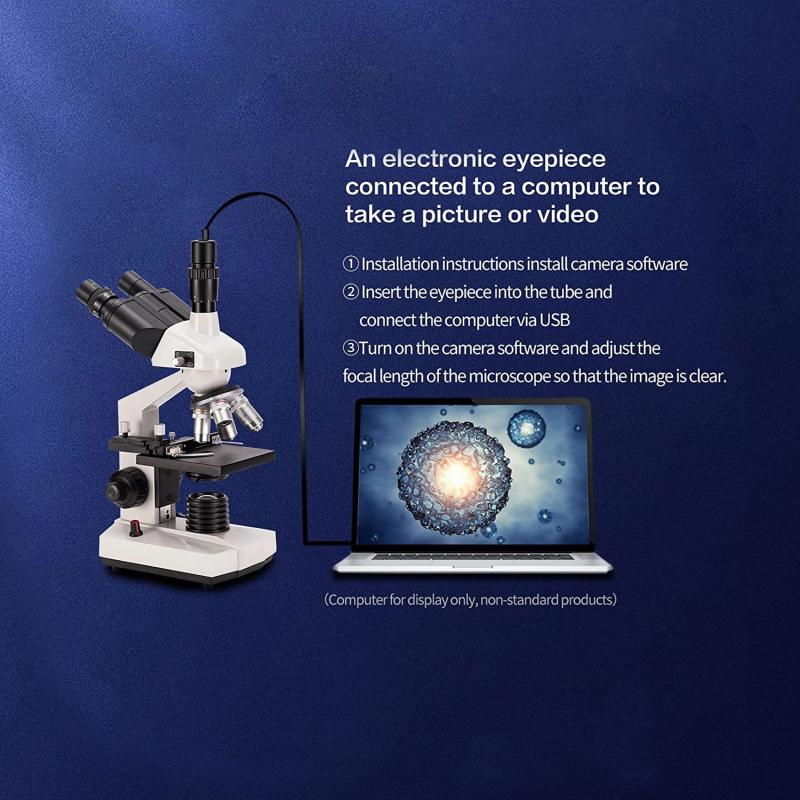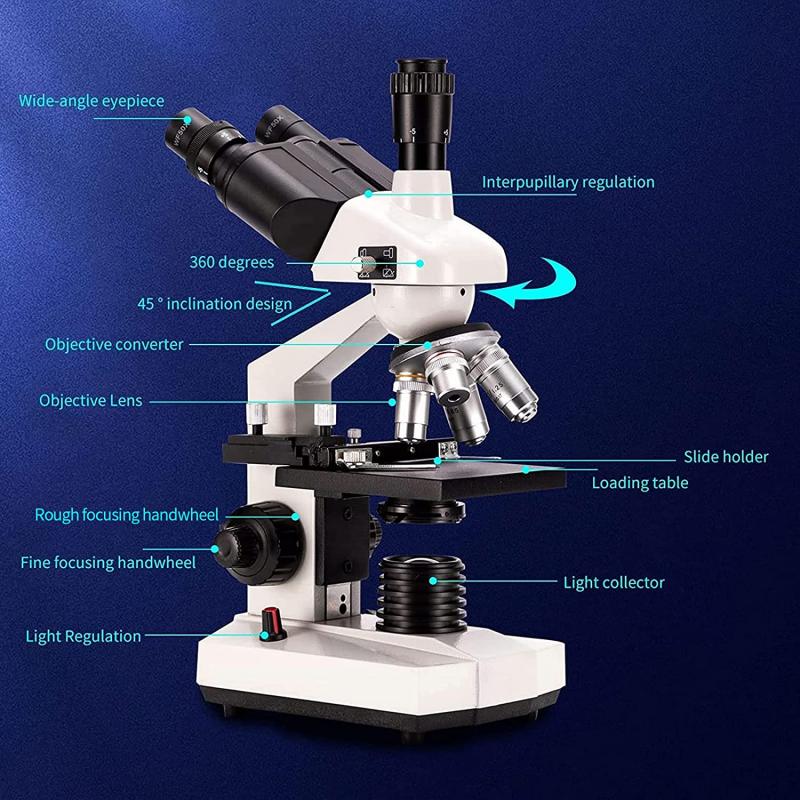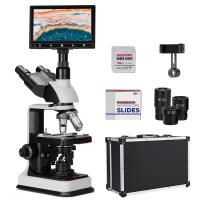What Do You See In A Microscope ?
When looking through a microscope, you can see magnified images of objects that are too small to be seen with the naked eye. This includes various biological specimens such as cells, tissues, and microorganisms. Additionally, you can observe the fine details of non-living materials like minerals, crystals, and fibers. The microscope allows you to explore the intricate structures, textures, and patterns of these objects, providing valuable insights into their composition and organization.
1、 Microorganisms and Bacteria
When looking through a microscope, one can observe a fascinating world of microorganisms and bacteria. These tiny organisms, invisible to the naked eye, play a crucial role in various ecosystems and have a significant impact on human health.
Microorganisms, also known as microbes, are diverse and abundant. They include bacteria, archaea, fungi, protists, and viruses. Under a microscope, one can see the intricate structures and shapes of these organisms. Bacteria, for example, can appear as rods, spheres, spirals, or even star-shaped. Some may have flagella, which allow them to move, while others form colonies or biofilms.
Microorganisms are found virtually everywhere, from soil and water to the human body. They are involved in essential processes such as nutrient cycling, decomposition, and symbiotic relationships. Additionally, they are used in various industries, including food production, pharmaceuticals, and biotechnology.
In recent years, advancements in microscopy techniques have allowed scientists to delve deeper into the world of microorganisms. High-resolution microscopy, such as electron microscopy, enables the visualization of intricate details at the nanoscale level. This has led to new discoveries and a better understanding of microbial structures and functions.
Furthermore, microscopy combined with fluorescent labeling techniques has revolutionized the study of bacteria and their interactions with their environment. Scientists can now observe specific cellular processes, such as gene expression or protein localization, in real-time. This has provided valuable insights into the mechanisms of bacterial pathogenesis, antibiotic resistance, and biofilm formation.
In conclusion, when peering through a microscope, one can witness the diverse and complex world of microorganisms and bacteria. These tiny organisms, once invisible to us, are now being unraveled through advanced microscopy techniques, leading to a deeper understanding of their roles in ecosystems and human health.

2、 Cellular Structures and Organelles
When looking through a microscope, one can observe a fascinating world of cellular structures and organelles. These microscopic components are the building blocks of life and play crucial roles in the functioning of cells.
One of the most prominent structures visible under a microscope is the cell membrane, a thin layer that surrounds the cell and acts as a barrier between the internal and external environment. It controls the movement of substances in and out of the cell, maintaining homeostasis.
Within the cell, various organelles can be observed. The nucleus, often referred to as the control center of the cell, contains the genetic material in the form of DNA. It regulates cell activities and is responsible for the transmission of genetic information.
Another organelle that can be seen is the mitochondria, often described as the powerhouse of the cell. These structures generate energy through cellular respiration, producing adenosine triphosphate (ATP) for the cell's metabolic processes.
Endoplasmic reticulum (ER), both rough and smooth, can also be observed. The rough ER is studded with ribosomes and involved in protein synthesis, while the smooth ER is responsible for lipid synthesis and detoxification.
Golgi apparatus, resembling a stack of flattened sacs, is involved in the modification, sorting, and packaging of proteins for transport within or outside the cell.
Microscopes also reveal the presence of various vesicles, small membrane-bound sacs involved in transporting molecules within the cell.
Recent advancements in microscopy techniques, such as super-resolution microscopy, have allowed scientists to observe cellular structures with even greater detail. This has led to the discovery of previously unknown organelles and a deeper understanding of their functions.
In conclusion, when peering through a microscope, one can witness the intricate world of cellular structures and organelles. These microscopic components are essential for the proper functioning of cells and provide valuable insights into the complexity of life at the cellular level.

3、 Tissues and Histology
When looking through a microscope in the field of Tissues and Histology, one can observe a fascinating world of intricate structures and cellular organization. Tissues are composed of specialized cells that work together to perform specific functions in the body. Histology, the study of tissues, allows us to understand the organization and characteristics of these cells.
Under a microscope, one can see various types of tissues, including epithelial, connective, muscular, and nervous tissues. Epithelial tissues line the surfaces of organs and cavities, and they can be observed as tightly packed cells with distinct shapes and arrangements. Connective tissues, on the other hand, consist of cells embedded in an extracellular matrix, which can be visualized as a network of fibers and ground substance. Muscular tissues appear as elongated cells with striations or smooth surfaces, depending on the type of muscle. Lastly, nervous tissues exhibit branching cells and long extensions called axons and dendrites, which allow for communication between cells.
Advancements in microscopy techniques have revolutionized the field of Tissues and Histology. With the development of confocal microscopy, researchers can now obtain three-dimensional images of tissues, providing a more comprehensive understanding of their structure and organization. Additionally, immunohistochemistry techniques allow for the visualization of specific proteins within tissues, enabling the identification of different cell types and their functions.
In recent years, there has been a growing interest in studying the microenvironment of tissues using microscopy. This involves examining the interactions between cells and their surrounding extracellular matrix, as well as the presence of immune cells and blood vessels. Such studies have shed light on the role of tissue microenvironment in various diseases, including cancer and inflammation.
In conclusion, when peering through a microscope in the field of Tissues and Histology, one can observe the intricate cellular organization of different types of tissues. Advancements in microscopy techniques have allowed for a deeper understanding of tissue structure and function, including the study of tissue microenvironments. This knowledge is crucial for unraveling the complexities of various diseases and developing targeted therapies.

4、 Molecular and Genetic Analysis
In a microscope, molecular and genetic analysis allows scientists to observe and study the intricate world of molecules and genes. By using advanced techniques and technologies, researchers can delve into the fundamental building blocks of life and gain a deeper understanding of biological processes.
When peering through a microscope, scientists can visualize the structure and behavior of molecules. They can observe the arrangement of atoms within a molecule, which provides insights into its chemical properties and interactions. This knowledge is crucial for understanding how molecules function in various biological processes, such as enzyme catalysis, DNA replication, and protein synthesis.
Furthermore, genetic analysis using a microscope enables scientists to study the genetic material of organisms. By examining chromosomes, DNA, and genes, researchers can investigate the inheritance patterns of traits, identify genetic mutations, and explore the mechanisms underlying genetic diseases. Microscopy techniques, such as fluorescence in situ hybridization (FISH) and fluorescent labeling, allow for the visualization of specific genes or DNA sequences within cells, providing valuable information about their location and expression patterns.
In recent years, advancements in microscopy have revolutionized molecular and genetic analysis. Super-resolution microscopy techniques, such as stimulated emission depletion (STED) microscopy and single-molecule localization microscopy (SMLM), have pushed the boundaries of resolution, enabling scientists to visualize molecular structures with unprecedented detail. This has opened up new avenues for studying cellular processes at the nanoscale level.
Moreover, the integration of microscopy with other technologies, such as genomics and proteomics, has enhanced our understanding of the complex interplay between genes, proteins, and cellular functions. By combining microscopy with techniques like next-generation sequencing and mass spectrometry, researchers can obtain comprehensive molecular profiles of cells and tissues, providing a holistic view of biological systems.
In conclusion, a microscope in the context of molecular and genetic analysis allows scientists to observe and investigate the intricate world of molecules and genes. It provides a window into the fundamental processes that govern life, offering valuable insights into the structure, function, and behavior of biological molecules. With ongoing advancements in microscopy techniques, our ability to explore the molecular and genetic landscape continues to expand, leading to new discoveries and advancements in various fields, including medicine, biotechnology, and genetics.































There are no comments for this blog.